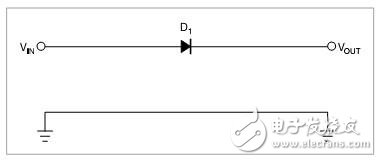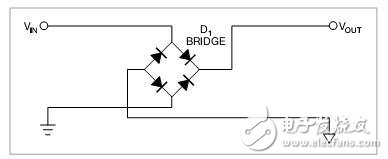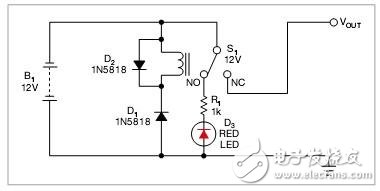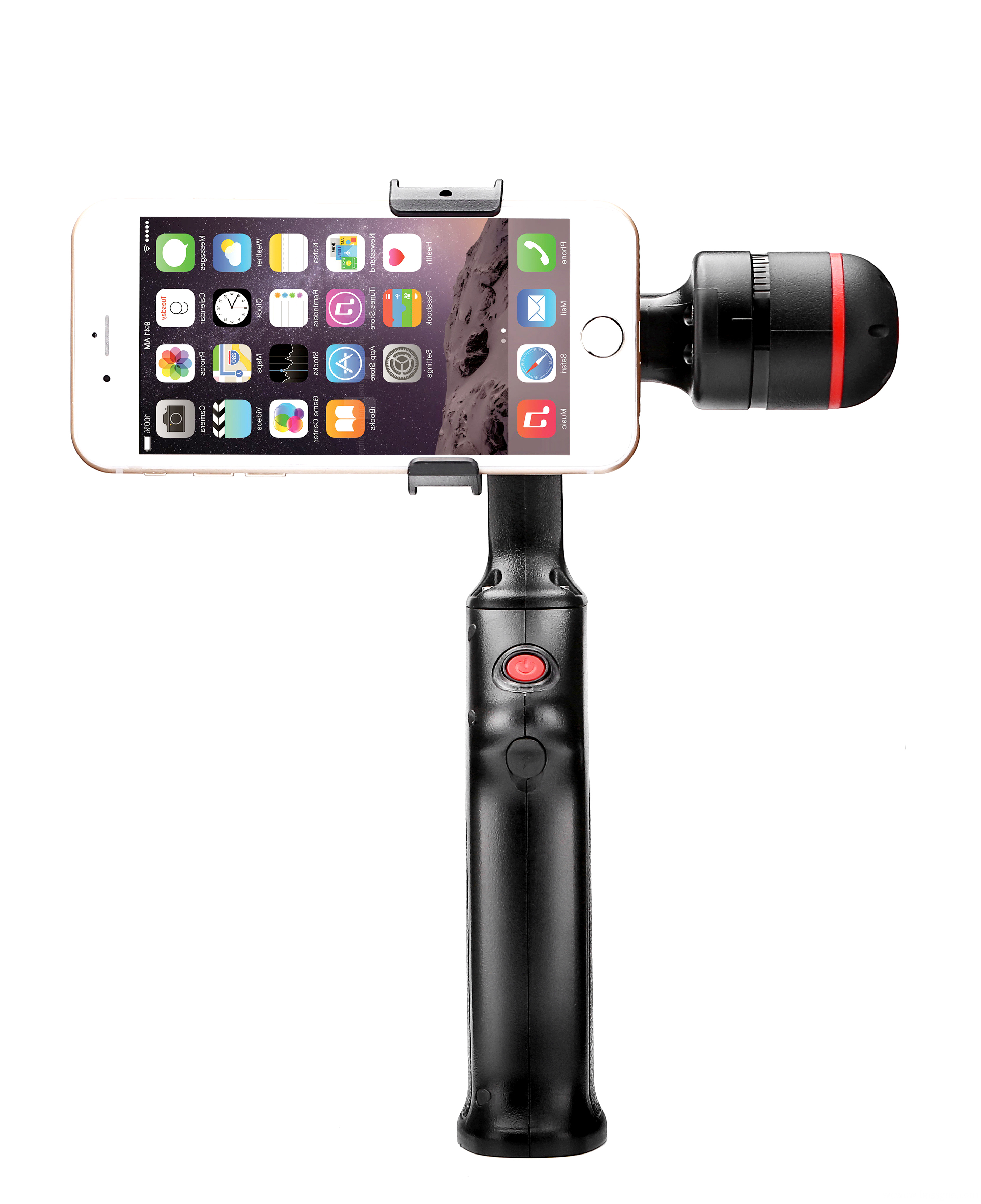A common method of reverse voltage protection is to use a diode to prevent damage to the circuit. One solution is to use a series diode that only allows current to flow to the correct polarity (Figure 1). It is also possible to rectify the input with a diode bridge so that the circuit will always have the correct polarity (Figure 2). The disadvantage of these solutions is that the voltage drop across the diode consumes energy. When the input current is 1A, the circuit consumption in Figure 1 is 0.7W, and the power consumption of the circuit in Figure 2 is 1.4W. This example presents a simple method that has no voltage drop and no power consumption (Figure 3 ).
This method uses a relay to handle the reverse polarity voltage problem. For example, a 12V power supply system uses a 12V relay. When the correct polarity is applied to the circuit, D1 is reverse biased and relay S1 remains off. The input and output power lines are normally connected to the terminals of the relay and current flows to the final circuit. Diode D1 blocks the relay's power supply and prevents the circuit from consuming power.
When an incorrect reverse polarity is applied, the diode is forward biased, causing the relay to start (Figure 4). The relay cuts off the power to the final circuit and the red LED illuminates, indicating a reverse voltage. The circuit consumes power only when a reverse polarity voltage is applied. Unlike FET or semiconductor switches, the relay contact switches have low on-resistance, which means that there is no voltage drop between their input supply and the protected circuit. Therefore, the design is suitable for systems with tight voltage margins.

Figure 1. A series diode protection system is immune to reverse polarity, but the diode consumes power.

Figure 2. With a bridge rectifier, the system works without the polarity of the input. This circuit diode consumes twice as much power as the circuit in Figure 1.

Figure 3. A relay switch can bypass the system's power supply without power consumption. D2 is used for the clamp of the inductive current of the relay coil.

Figure 4, in the reverse input voltage, the relay switch snaps, cuts off the power supply to the system, and the LED illuminates.
Two-axis phone stabilizer is composed of rolling axis and tilt-axis. With a gyro-stabilized gimbal system, it reduces the movements when you are moving to shoot a smooth video.

2 axis gimbal stabilizer is compatible with various smartphone.
Wewow focusing on handheld stabilizer is a technology company which does R & D independently. With Wenpod series product released, the company achieved the industry's praise and quickly became the leader of the smart stabilizer industry.
Our service
1. Reply to you within 24 hours.
2. Already sample: within 1-2days.
3. Shipping date: within 24 hours once get the payment.
4. 12 months warranty.
5. After-sales service, solve within 3 working dates.
If you have any questions, please contact with us directly.
Wewow appreciates domestic and international business relationship!
Two-axis Smartphone Stabilizer
Two-Axis Smartphone Stabilizer,Popular Two-Axis Smartphone Stabilizer,Professional Two-Axis Smartphone Stabilizer,Handheld Two-Axis Smartphone Stabilizer
GUANGZHOU WEWOW ELECTRONIC CO., LTD. , https://www.stabilizers.pl